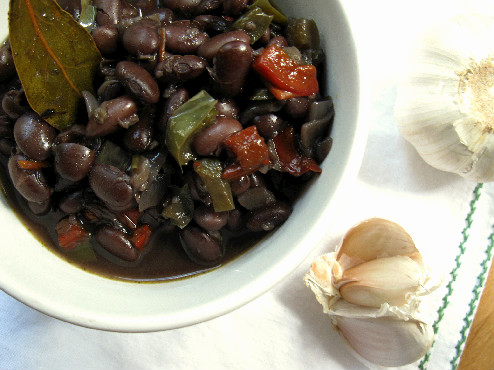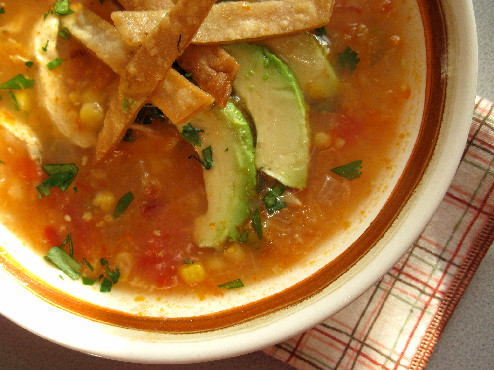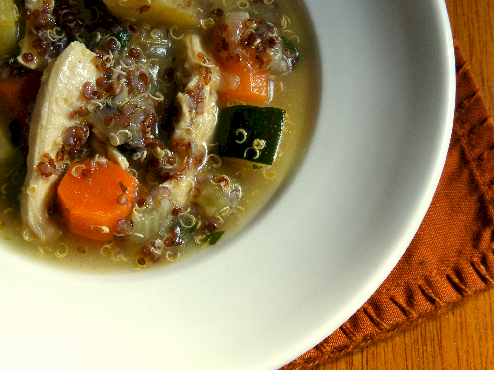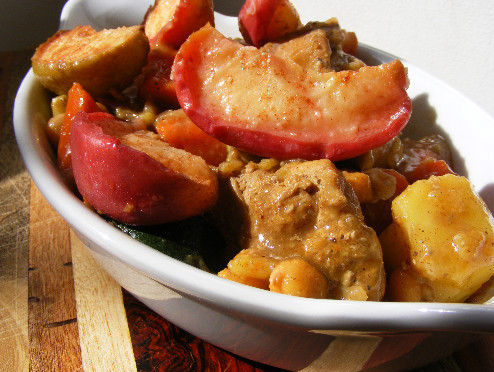Kale: Caldo Verde – Portuguese “Green” Soup
Thursday, November 10th, 2011During the fall and winter, we make a BIG pot of soup at least once a week. It’s just the two of us, but we usually make enough for at least eight servings. Obviously, neither one of us have a problem eating leftovers and, some usually ends up in the freezer for a quick dinner on those occassions when neither one of us want to lift a finger.
This Portuguese Caldo Verde will definitely make it into our regular rotation of favorite soups. See some of them like:
Ethiopian Red Lentil Soup
Mexican Caldo de Res (beef soup)
Green Pozole
African Peanut Quinoa Soup
Sotanghon (Filipino Chicken Soup)
Mexican Tortilla Soup
Avgolemono (Green Lemon Chicken Soup)
Caldo verde is a Portuguese cabbage and potato soup. It’s considered a national dish of Portugal – enjoyed both at home and in fine restaurants. Its simplicity is like that of Irish Colcannon (mashed potatoes with kale), which also appealed to country peasants. Caldo verde’s main ingredients include potatoes, greens, and smoked sausage.
As you are well aware by now, kale descended from a wild cabbage native to the Mediterranean region. It is commonly used throughout Europe. There’s a heated debate among Portuguese food purists about what type of cabbage is “properly” used in caldo verde. In Portugal they use Portuguese cabbage called couve.
I’m no botanist. But, unscientifically – from my preliminary research online, in Portuguese cook books and various reference materials, couve formally called “couve trunchuda” is a headless cabbage similar to kale (sea kale) and collard greens. Because of the size and shape of couve’s leaf, however, it may be more akin to collards than kale. But, more recently, kale varieties have been increasingly used to make caldo verde – especially among non-purists like myself.
For this recipe – I would recommend lacinato kale, which is also known as dinosaur kale, Tuscan kale, black kale or cavolo nero. I prefer it over the curly variety in most dishes. It’s also the one I grow in my garden, since lacinato is much easier to clean than its curly cousin.
I also departed from tradition with this caldo verde recipe by adding a few other ingredients that marry well with the flavors of this very simple soup: vinegar and bay leaves. I did however maintain the distinctive character of cutting the greens into “ribbons” (chiffonade).
This is a creamy soup made delicious with smokey sausage and it’s perfect any time the temperature dips or you need an easy go-to recipe.
Actually, the hardest part of this recipe was locating Portuguese smoked sausage. I scored some linguica, a milder Portuguese sausage than chaurico, from a small Brazilian market/restaurant in North Denver called Little Brazil (formerly Emporio de Brasil). Next time I’ll try some other smoked sausage varieties like Italian versions or kielbasa, which are easier to find.
Enjoy!















